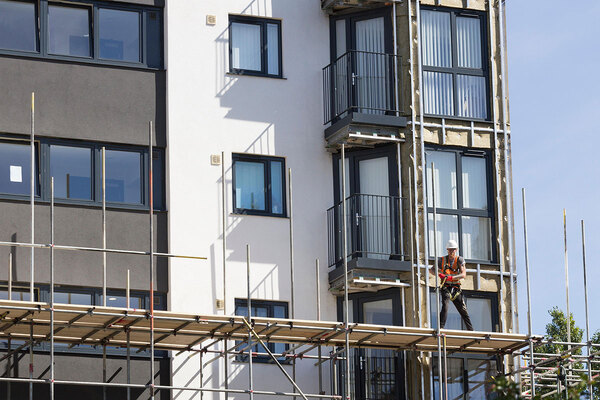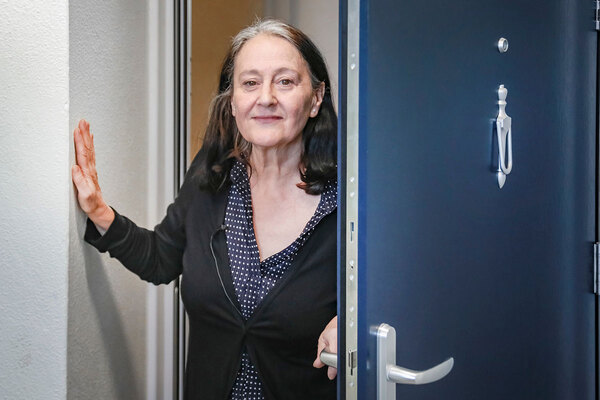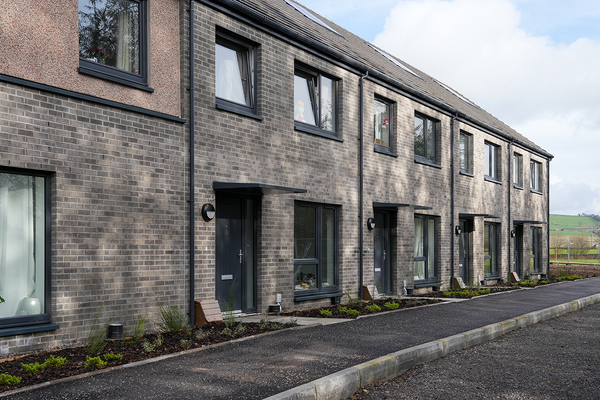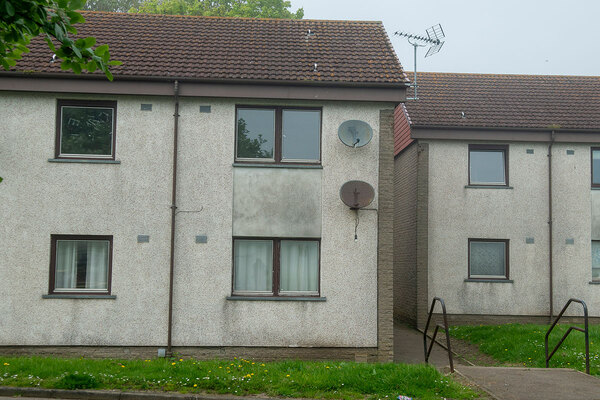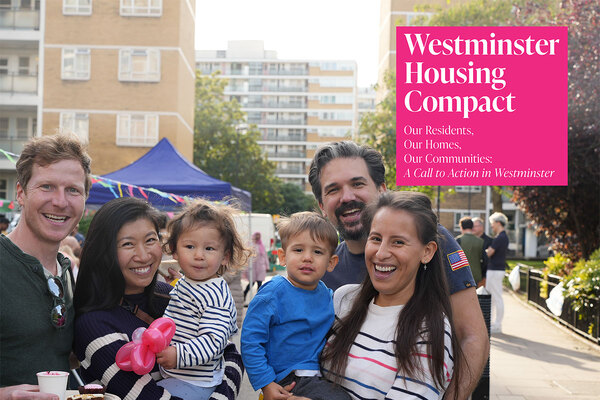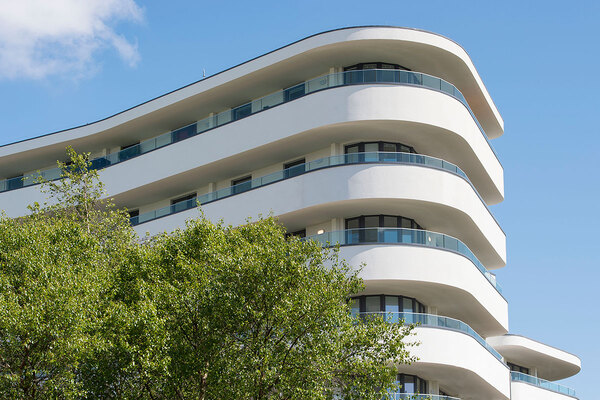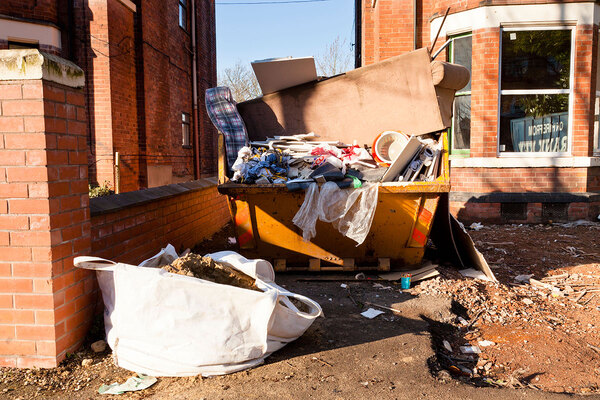Information boxes are vital for high-rise safety
Inside Housing speaks to Alastair Thompson, chief executive of fire safety product provider Gerda Security Products, about recent changes in rules surrounding safety products in high rises and their impact
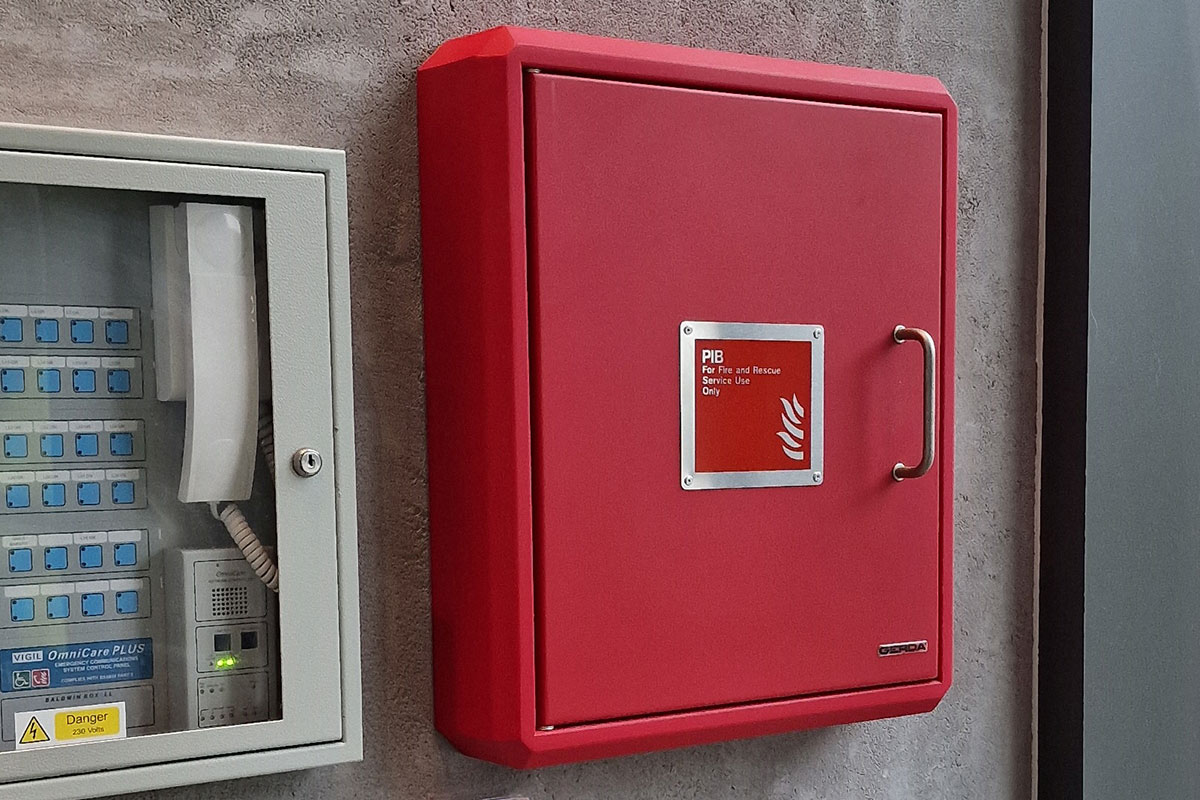
In association with:
![]()
Over the years, forward-thinking high-rise building owners and managers have opted to install innovative fire safety products on their premises. For example, in an emergency, secure information boxes give fire crews access to essential documents detailing the layout of the building and the location of key firefighting equipment.
However, safety legislation – such as the Building Safety Act 2022 and the Fire Safety (England) Regulations 2022 – means some fire safety products that were optional are now mandatory in high-rise accommodation. It is therefore vital for a building’s responsible person and accountable person to understand what their obligations are from a fire safety solution standpoint, so that any fire safety products they purchase are a comprehensive and compliant investment.
Inside Housing finds out more from Alastair Thompson, chief executive of Gerda Security Products – part of the GSP Group, specialist in emergency access systems and manufacturer of high-specification fire doorsets for new and existing buildings of all types and ages.
Can you give an example of how recent legislation has changed the rules surrounding fire safety products in high-rise buildings?
Take the Fire Safety (England) Regulations 2022. Since January 2023, it has been mandatory for existing high-rise residential buildings in England – of 18 metres and above, or seven storeys – to have a ‘secure information box’ installed on the premises. For new buildings, this is a requirement for blocks of flats with a top storey that is 11 metres over ground level. Importantly, the legislation also calls for consideration to be given to other buildings with large, complex or uncommon layouts.
What is behind this particular requirement?
The Grenfell Tower Inquiry Phase One report. This highlighted that the lack of on-site information available to the London Fire Brigade on the night of the fire could have further hampered its response had the layout of the building been more complex. It therefore recommended that the owner and manager of all high-rise residential buildings be required by law to have ‘premises information boxes’ installed where this information can be accessed.
What is the difference between a ‘premises information box’ and a ‘secure information box’?
The generic term for ‘a premises information box’ is a ‘secure information box’ – so, essentially, they’re one and the same. The premises information box was originally conceived and developed by our company in 2005 with the fire and rescue service, to their exacting specification. Known as the PIB®, it is designed so that the fire and rescue service has fast access to building plans and information in the event of a fire.
How important are these boxes, particularly in light of recent guidance from the Building Safety Regulator?
Their importance cannot be overstated. In 2013, the coroner’s inquest following the fire at Lakanal House recommended that owners of high-rise residential buildings be required to provide “relevant information on or near the premises, such as premises information boxes”. While this was not a legal requirement, a large number of housing organisations were early adopters.
Under Fire Safety (England) Regulations 2022, the responsible person must ensure that information, including the name, address and telephone number of the responsible person (in the UK) and the name and contact information of other authorised persons provided with access to the building, must be contained in the secure information box. Recent similar guidance was issued in April 2024 by the Health and Safety Executive in relation to the accountable person. This is information that is mandated to be kept “reasonably secure from unauthorised access and vandalism”.
What is the emergency response pack?
The emergency response pack is the information – tailored to the building – that is contained within the secure information box, and intended for use by the fire and rescue services. The Fire Safety (England) Regulations 2022 made it a legal requirement for responsible persons of high-rise residential buildings to draw up and share electronically up-to-date floor plans identifying the location of key firefighting equipment with their local fire and rescue services. Hard copies of the pack must be kept in the secure information box to aid the operational response of firefighters.
What sort of information should the emergency response pack include?
This is laid out clearly in the Fire Industry Association and the National Fire Chiefs Council’s Code of Practice for Premises Information Boxes. Information should include, among other items, a log book; an ‘off the run’ sheet, detailing any firefighting installations that are not in use; an orientation plan; a building layout plan; up-to-date floor plans; and information on residents with mobility, cognitive or sensory impairments.
The code of practice also states that the packs must be presented in a consistent format. What sort of format should this be in, and why is this necessary?
Plans should be A3 in size – which is very important in terms of operational use by firefighters – and held or contained in plastic wallets to “stand up to the rigours of use”. A consistent format is an essential way of mitigating risk. It’s why the emergency response pack service that Gerda Security Products offers, for housing and high-rise building providers, includes a building survey completed by experienced teams with formats aligning with the code of practice and the production of plans, in both digital and A3 laminated copies.
Is this type of fire safety measure expensive?
Compared to key essential firefighting equipment – such as smoke control systems and suppression systems – the secure information box is at the lower end of the scale in terms of investment. The High Security PIB® is circa £1,000 for a single purchase directly from Gerda Security Products and is designed to last the lifetime of the building. There are PIBs that have been in situ for more than 18 years. Ways to maximise investment in this area include packages with emergency response pack plans and discounts for larger quantities.
What ongoing requirements need to be met for secure information boxes?
Secure information boxes need to be in good working condition for fire and rescue service operational response, so maintenance is important, as highlighted in the Fire Safety Order. This means that secure information boxes must be checked monthly. Under the Building Safety Act, straightforward building work will be regulated by a competent person scheme. This includes installation and maintenance of the secure information boxes.
Gerda Security Products can answer further questions at Housing 2024, on 26-27 June, on Stand G20
Recent content in association with Gerda Security Products
City of London Corporation has updated safety aspects in 2,300 homes: this is how it was done
The governing body of London’s Square Mile invested £9m to upgrade fireset doors in its housing to comply with new fire door regulations introduced in January
How do legislative changes impact fire door safety?
Changes to building and fire safety legislation can actually help social landlords with insulation, decarbonisation, noise reduction and energy costs, says GSP Group’s Alastair Thompson
What does the new fire door regulation mean for landlords?
A webinar run by Inside Housing in association with Gerda explored how a housing association’s safety team can take on new requirements to check fire doors more regularly, and how to engage residents in the process
What do the changes to the Fire Safety Bill mean?
Following recommendations from the Grenfell Inquiry, the Fire Safety Bill has been amended with the intention of providing improved safety measures. Inside Housing hosted a discussion with sector experts to discuss what social landlords need to do
Sign up for our fire safety newsletter
Already have an account? Click here to manage your newsletters
